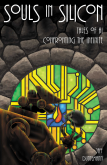Because as best I can tell Zoundry Raven is abandonware (it hasn’t been updated in almost four years) I’ve been sniffing around for a client-side blog editor that’s still alive and kicking. I came across something peculiar the other day, which highlights a trend in small-scale commercial software that I find extremely annoying: Hiding your pricing structure and obfuscating your business model.
The product in question is Chrysanth WebStory. I went up to the firm’s Web site to see what it is, what it does and what it costs. Figuring out what it is was not easy. Figuring out what it does was easier, though I keep getting the creeping impression that I don’t have the whole story. Figuring out what it costs is impossible, apart from near certainty that it is not free. (More on that shortly.)
When I evaluate commercial software, I do a certain amount of research before I even download the product. I look for a company Web site. I look for buzz, in the form of online discussion and product reviews posted by individuals on their own blogs, and not sites supported by ads. I make sure I understand how the company makes money (one-time cost? subscription?) and how much money is involved. Only then do I download the software and give it a shot.
The first red flag with WebStory is that there is almost no buzz online. The free download is available all over the place, but almost no one has anything to say about it. The site itself is extremely stingy with hard information. I managed to dope out that what WebStory really is is a blogging service. There is a free client-side editor app that connects to the company servers, where blog entries are stored in a database. From the database you can feed one or more blogs hosted elsewhere, or a blog hosted on the firm’s own servers.
There are two license levels for the service, casual and professional. The casual license is limited, and to activate it you must present a certain unstated number of undefined “credits.” Here’s where it gets a little freaky: To find out more about the service’s cost you have to establish an account with WebStory, which involves handing them an email address and creating a password.
Read that again: You have to create an account before you can even find out what the service costs. Nowhere on the public portions of the site do I see any mention of what credits cost, nor what the professional license costs. It’s true that they do specify that credits can be earned by writing reviews of the product, but for people who would just prefer to pay for the service, there’s no clue at all. The service is thus “free” in the sense that you can use it without paying money for it as long as you keep reviewing it and earning credits. (Or something.) In my view, it doesn’t matter if you are required to pay in money or credits. Paying anything at all for the Chrysanth WebStory service means that it is not free.
The almost complete lack of discussion of the product online makes me wonder if more than a dozen people are actually using it. The online forums have 14 posts total, across all forum topics. Discussion of the product in other online venues is virtually absent. Of the handful I found, this one was not reassuring.
I do not object to paying for software or online services. I do it all the time. I have a lot of sympathy for developers who want to explore new business models and ways to make money. I can also understand that linking a piece of client-side software to a server-side system is one way to eliminate software piracy as an issue. None of that bothers me in the slightest. What I object to is the secrecy. Tell me up front and in big type: What does your product/service cost?
And how in any weird dimension of the multiverse can it help sales to keep the price a secret?











